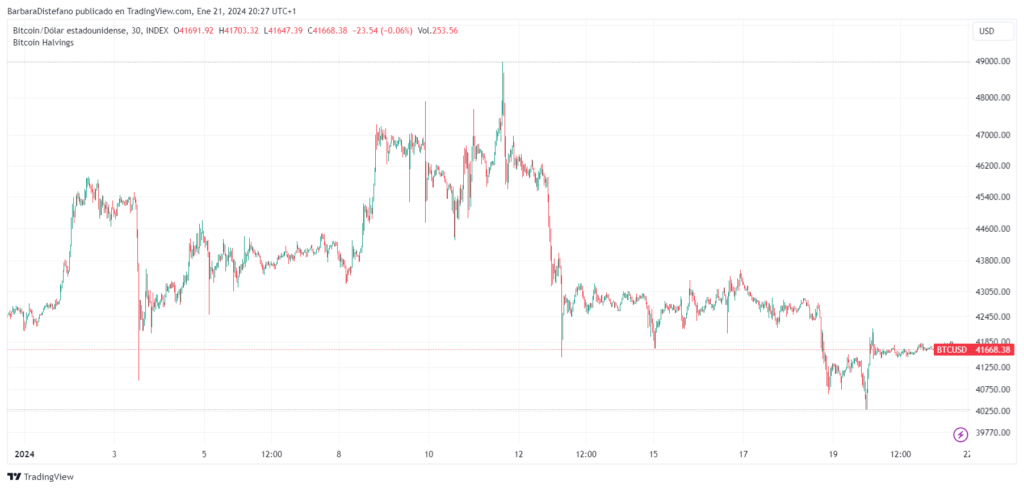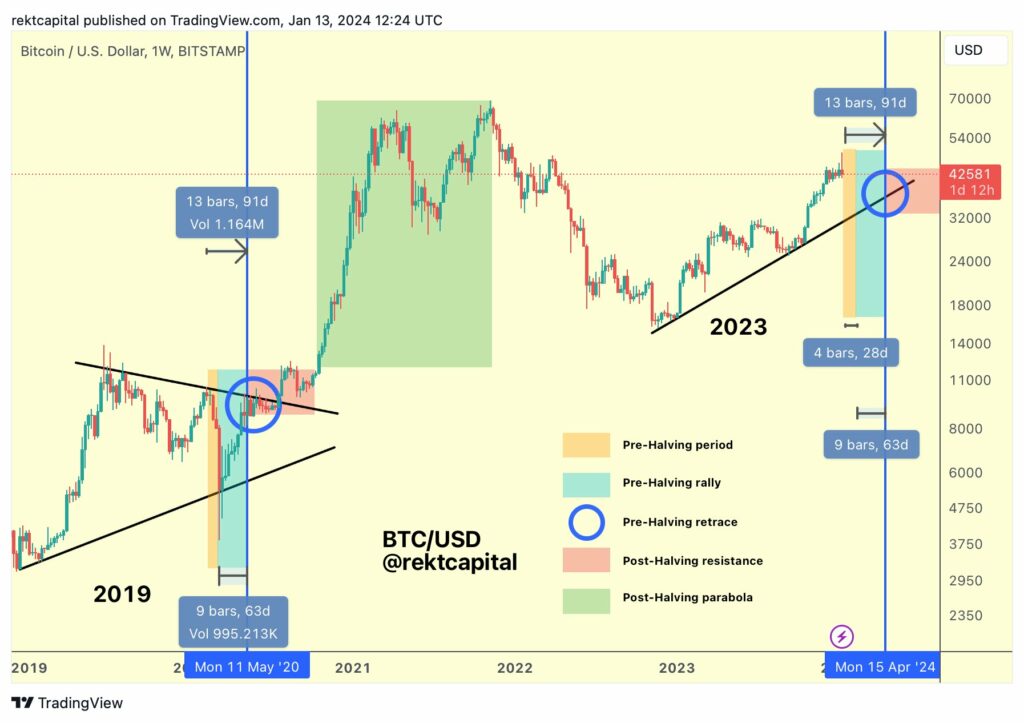The recent Bitcoin (BTC) price drop from $49,000 to $40,000-41,000 came at a pivotal time in the market. There are still about three months until the next halving, an event that has impacted price in the past.
Halving is the halving of the issuance of Bitcoin The supply in the foreign exchange market decreases, causing the price to increase.. This event takes place approximately every four years and will next take place in April-May 2024.
In the months leading up to the halving, the Bitcoin price tends to rise due to growth expectations following such an event. However, this trend is not linear, but has experienced some setbacks in the past and currently, as the following graphic shows. TradingView.

Due to the time remaining until the halving, the cryptoasset trader and analyst goes by the name Rekt Capital Advance payment that BTC is in a window where a “deeper decline” could occur until mid-February. This scenario can occur as a profit-taking moment, as recently reported by CriptoNoticias.
“Historically, any deeper pullbacks that occur during this period result in investors achieving fantastic ROI in the months following the halving,” the analyst said.
This phase “will likely represent the last opportunity to bargain buy Bitcoin,” he added. He pointed this out by showing the graph below, in which this phase of decline is colored yellow just before what he perceives as the historic rise.

There could be high price volatility for Bitcoin this year due to the halving
Rekt Capital explained that after this period of decline With about two months left until the halving, a price rally tends to occur. In the previous graphic you can see this moment in light blue color. He explains that such a situation arises from an increase in buying by investors trying to “sell the news” when the event occurs in order to take profits.
Due to this selling pressure, the analyst points out that Bitcoin price has historically tended to fall a few days before or shortly after the halving, as shown by the blue circle on the chart. It says that in the previous edition in 2020 the decline was 20%, while in 2016 it was 38%.
“This pre-halving pullback may last for several weeks, leaving investors wondering whether the halving was even a bullish price catalyst,” he mentions. However, he clarifies that these doubts disappear some time later when demand increases due to the reduced supply caused by the event.
Then the “reaccumulation phase” begins, marked in red on the graph, and then the “parabolic uptrend” stands out in green. In this final phase, Bitcoin is experiencing “accelerated growth on the way to new all-time high prices,” he concludes.
In fact, the Bitcoin price has reached a new all-time high months after each halving.